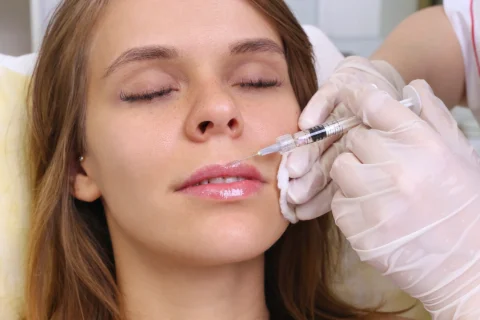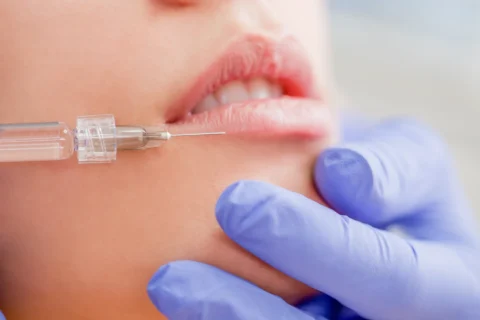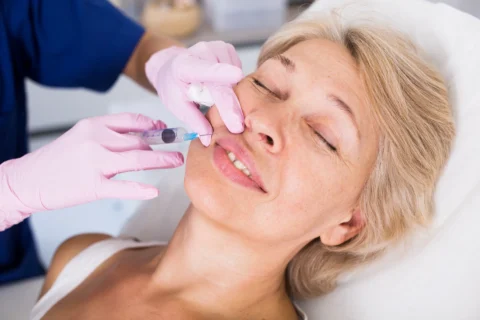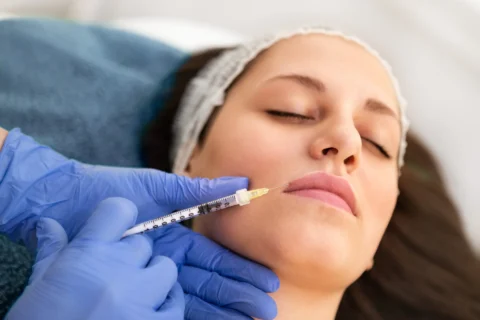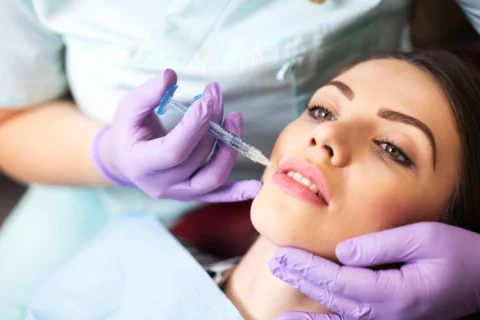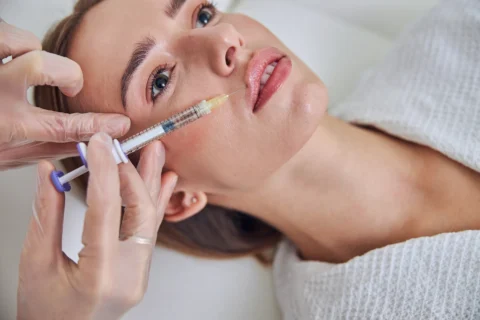Double Take: Are Lip Fillers and Injections Really Different?
In the age of the perfect Instagram selfie, the chase for that luscious, influencer-worthy pout has never been more real. Enter the world of cosmetic enhancements, and you’ll quickly encounter two buzzwords: “lip fillers” and “lip injections.”
If you’ve ever scrolled through your feed, deep-dived into beauty TikToks, or engaged in a skincare Twitter debate, chances are you’ve seen these terms tossed around as if they’re twin siblings. And you might be scratching your head thinking, aren’t they the same thing?
Bingo! While they often get mixed up in the beauty blender of jargon, they’re pretty much two sides of the same glossy coin. So, pull up a seat (or your favorite beauty filter) and join us as we unravel the mystery, debunk the misconceptions, and serve you the unfiltered tea on achieving that #InstaPerfect pout. Whether you’re in it for the likes or just a splash of self-love, we’re here to guide your lip journey.
Understanding Lip Fillers vs. Lip Injections
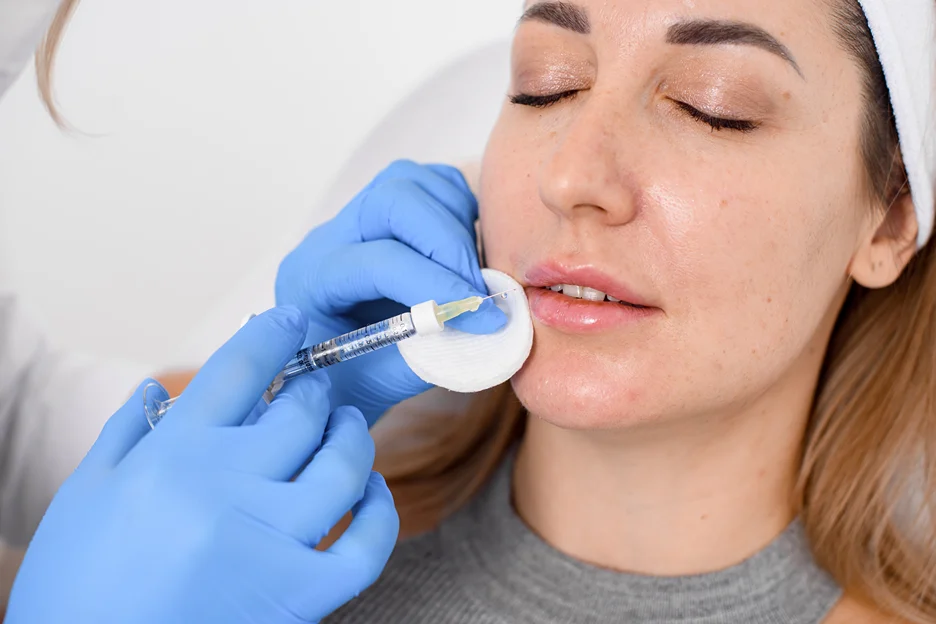
Lip Fillers: The Basics and Beyond
Lip fillers are all the rage, especially among those looking for that perfect selfie pout. At the heart of this popular treatment is hyaluronic acid, a substance known for its capability to retain water.
When used in fillers, it gives lips a natural and hydrated boost, perfect for anyone seeking to add some actual volume or improve contour. Think of it as the go-to choice for a non-surgical refresh that leaves your lips looking smoother and more youthful.
Lip Injections: A Broader Perspective
Now, “lip injections” might sound more intense, but they cover a more extensive range of lip-enhancing options. While lip fillers are part of this group, lip injections also include other lip treatments, such as fat transfers.
In this cosmetic procedure, fat is taken from another part of your body, processed, and then used to plump up those lips. It’s a bit more involved and offers a different approach compared to the standard lip fillers. While lip fillers offer predictable and consistent results, methods like fat transfers can vary in their outcomes.
Lip fillers are a type of lip injection, but not all lip injections are strictly fillers. Both have the same goal: to elevate and beautify your smile, but providers may utilize different materials and techniques to achieve the desired results.
Breaking Down the Types of Lip Fillers
So, we’ve ventured into the world of lip enhancements and unpicked the often-blurred lines between lip fillers and lip injections. Got it, they’re essentially siblings under the broad umbrella of other lip injections.
But hang tight, because now we’re diving deeper into the lip filler types. If you’ve ever wondered about the unique characters in this lineup, you’re in for a treat.
Hyaluronic Acid Fillers
This is the superstar in the lip filler league. Produced naturally by our bodies, hyaluronic acid fillers are the go-to for enhancing the shape, structure, and volume of the lips.
What sets it apart? Well, besides offering a comfortable experience and a natural appearance, it comes with a peace-of-mind feature: its effects are temporary.
So, if ever there’s a change of heart or you fancy a different look, no sweat – it can be dissolved using hyaluronidase. Plus, for that extra touch of comfort, some of these dermal fillers even come with lidocaine, ensuring your enhancement journey is as smooth as your newly plumped pout.
Collagen Lip Fillers
Once the go-to, collagen lip fillers have seen a decrease in preference over the years. The shift is largely due to the emergence of hyaluronic acid fillers, which many find to offer a more comfortable and natural-looking result.
Poly-l-lactic Acid (PLLA) Fillers
PLLA fillers are unique in their action. Instead of merely adding volume immediately, they’re absorbable, semi-permanent, and work by stimulating collagen formation over time.
This gradual process restores volume to areas that have experienced loss. Initially developed and FDA-approved for addressing facial fat loss in HIV patients due to antiretroviral therapy-induced lipoatrophy, PLLA fillers have gained traction for correcting nasolabial fold deficiencies and other facial wrinkles in the general population.
Calcium Hydroxylapatite (CaHA) Fillers
CaHA fillers are biodegradable soft tissue fillers that have been FDA-approved to improve the appearance of moderate to severe facial wrinkles and folds, notably the nasolabial folds.
Beyond wrinkles, CaHA is recognized for its capacity to counter facial fat loss in those affected by the HIV virus. An added advantage is its availability both with and without the anesthetic, lidocaine, providing options for those sensitive or allergic to the substance.
Polymethylmethacrylate (PMMA) Fillers
Venturing into the world of synthetic fillers, PMMA stands out. Consisting of a mixture where approximately 20% are tiny PMMA microspheres suspended in 80% purified collagen gel, PMMA fillers are semi-permanent in nature.
They shine especially in addressing medium-to-deep wrinkles, folds, and furrows, with nasolabial folds being a common target. Additionally, they serve as a remedy for pitted scars and can even augment thin lips.
Exploring Other Lip Augmentation Procedures
While hyaluronic acid fillers have made a significant splash in the lip enhancement arena, they are just one of the various effective options available. Here’s a closer look at some alternative lip augmentation procedures:
- Lip Implants: Opting for a more permanent solution, lip implants utilize plastic materials to offer enhanced fullness to the lips. The two primary materials employed are silicone and expanded polytetrafluoroethylene.
- Fat Injections: Tapping into a person’s own resources, this procedure harvests fatty tissue from parts of the body, like the hips or thighs, and reintroduces it to the lips, offering natural plumpness.
- Lip Lifts: A surgical intervention, a lip lift aims to reduce the space between the nose and the top lip, the “philtrum”. By doing so, it accentuates the pink part of the lip, rendering it more visible and thereby providing an appearance of fuller lips.
- Lip Flip: Diverging from surgical methods, a lip flip employs botulinum toxin injections around the upper lip’s perimeter. This relaxes the muscle, causing a slight upward “flip” of the lip, giving it a fuller look.a
- Lip Microneedling: A procedure that’s on the gentler side, lip microneedling relies on tiny needles to induce micro-injuries on the lips. This process sparks collagen production, leading to naturally plumper lips.
As always, the ideal procedure is subjective and hinges on individual aspirations, the natural shape of one’s lips, and other personal factors. For an informed decision, seeking consultation with a medical expert is important.
To make your journey smoother, here’s a concise table breaking down the various lip procedures, their descriptions, how long they last, and the potential risks involved:
| Procedure | Description | Duration of Results | Risks |
| Hyaluronic acid fillers | A synthetic version of a substance that occurs naturally in the body. It is injected into the lips to add volume and fullness. | Temporary, lasting 6-12 months | Allergic reaction, bruising, swelling, pain |
| Collagen fillers | A natural substance that is injected into the lips to add volume and fullness. | Temporary, lasting 3-6 months | Allergic reaction, bruising, swelling, pain |
| Poly-l-lactic acid (PLLA) fillers | A synthetic substance that is injected into the lips to add volume and fullness. It gradually breaks down over time, stimulating collagen production. | Semi-permanent, lasting 1-2 years | Allergic reaction, bruising, swelling, pain |
| Calcium hydroxylapatite (CaHA) fillers | A synthetic substance that is injected into the lips to add volume and fullness. It gradually breaks down over time. | Semi-permanent, lasting 1-2 years | Allergic reaction, bruising, swelling, pain |
| Polymethylmethacrylate (PMMA) fillers | A synthetic substance that is injected into the lips to add volume and fullness. It is considered to be the most permanent type of lip filler. | Permanent | Allergic reaction, bruising, swelling, pain, migration of filler |
| Lip implants | Plastic implants that are inserted into the lips to add volume and fullness. | Permanent | Allergic reaction, infection, bruising, swelling, pain, implant migration |
| Fat injections | Fat is harvested from another part of the body and injected into the lips to add volume and fullness. | Permanent | Allergic reaction, infection, bruising, swelling, pain |
| Lip lift | A surgical procedure that removes excess skin and muscle from the upper lip, revealing more of the pink tissue and creating the appearance of fuller lips. | Permanent | Bleeding, infection, scarring, asymmetry |
| Lip flip | Botulinum toxin injections are used to relax the muscles in the upper lip, causing it to appear fuller. | Temporary, lasting 3-6 months | Allergic reaction, bruising, swelling, pain |
| Lip microneedling | Tiny needles are used to create micro-injuries on the lips, stimulating collagen production and plumping the lips. | Temporary, lasting 3-6 months | Pain, swelling, redness |
Deciding on the Right Lip Filler: 5 Factors to Ponder
When the thought of getting lip fillers crosses your mind, there’s more to it than just picking the most popular choice. A variety of considerations come into play to ensure you achieve your desired outcome and that the procedure aligns with your lifestyle and budget.
Below are some fundamental factors to contemplate before finalizing your decision:
- Desired Outcome: Before diving in, be clear about your objective. Whether you’re looking for a slight enhancement or a significant transformation, defining the look you aim for will guide your choice.
- Financial Considerations: Lip fillers vary in cost, with some procedures being more budget-friendly than others. It’s vital to research and plan financially before opting for a treatment.
- Lifestyle Habits: Your daily activities might influence the type of filler you opt for. For those who are frequently outdoors or have a high-energy lifestyle, a filler that’s durable and less prone to shifting might be ideal.
- Health Background: Your medical history plays a crucial role in this journey. If you have allergies or specific health conditions, it’s paramount to discuss them with your healthcare provider to ascertain the safest and most effective procedure for you.
- Setting Realistic Expectations: While lip fillers can do wonders, it’s essential to remember their limitations. They won’t transform your lips into a carbon copy of someone else’s or radically alter their natural structure. Knowing this can prevent potential disappointment and ensure satisfaction post-procedure.
When in doubt, always consult with a medical professional who can offer insights tailored to your individual circumstances and desires.
Still Unsure? Explore the Best Lip Fillers at Ethos Spa!
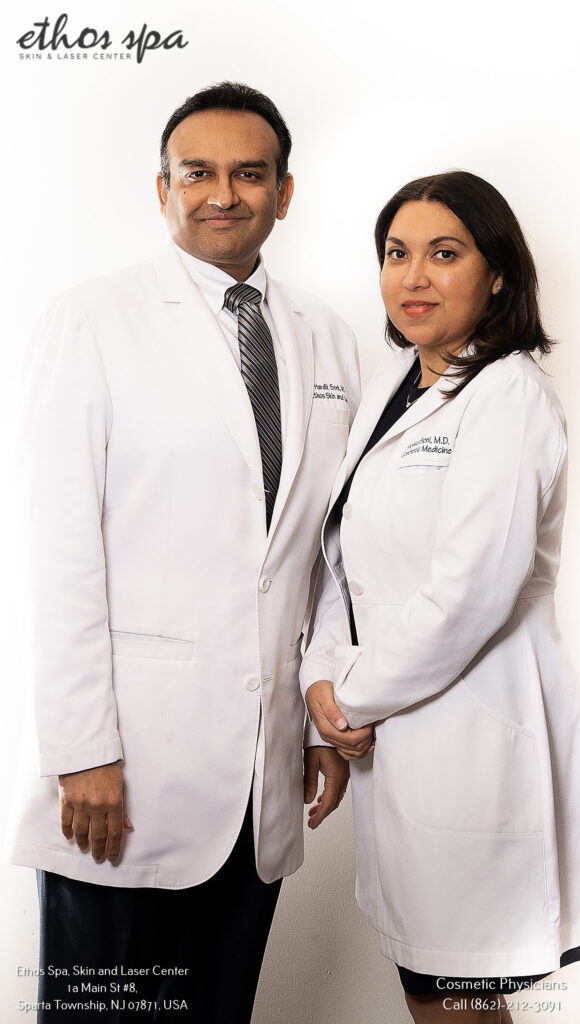
Making a decision about lip fillers can feel overwhelming with all the choices out there. But don’t fret – at Ethos Spa, we’re committed to guiding you through every step of the process. Our team of experienced professionals is here to provide tailored advice, ensuring you choose the right filler that aligns with your desires and needs.
From the first consultation to the post-treatment care, Ethos Spa ensures a seamless, comfortable, and informed experience. We pride ourselves on using only the best products, state-of-the-art techniques, and maintaining the highest standards of client care.
Ready to embark on your journey to plumper, more youthful lips? Book your consultation at Ethos Spa today and discover the perfect lip filler for you.


